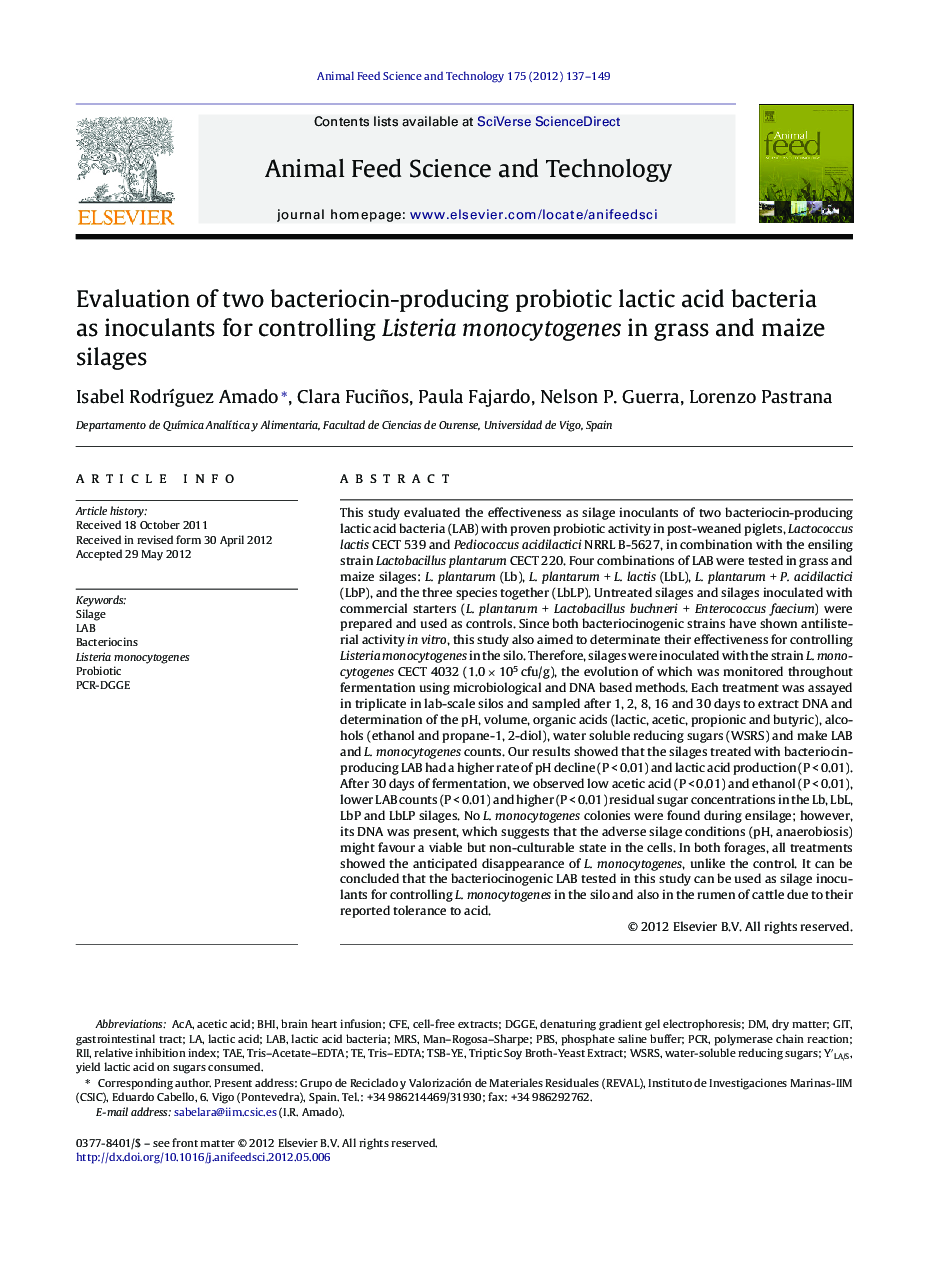| کد مقاله | کد نشریه | سال انتشار | مقاله انگلیسی | نسخه تمام متن |
|---|---|---|---|---|
| 2419923 | 1552415 | 2012 | 13 صفحه PDF | دانلود رایگان |

This study evaluated the effectiveness as silage inoculants of two bacteriocin-producing lactic acid bacteria (LAB) with proven probiotic activity in post-weaned piglets, Lactococcus lactis CECT 539 and Pediococcus acidilactici NRRL B-5627, in combination with the ensiling strain Lactobacillus plantarum CECT 220. Four combinations of LAB were tested in grass and maize silages: L. plantarum (Lb), L. plantarum + L. lactis (LbL), L. plantarum + P. acidilactici (LbP), and the three species together (LbLP). Untreated silages and silages inoculated with commercial starters (L. plantarum + Lactobacillus buchneri + Enterococcus faecium) were prepared and used as controls. Since both bacteriocinogenic strains have shown antilisterial activity in vitro, this study also aimed to determinate their effectiveness for controlling Listeria monocytogenes in the silo. Therefore, silages were inoculated with the strain L. monocytogenes CECT 4032 (1.0 × 105 cfu/g), the evolution of which was monitored throughout fermentation using microbiological and DNA based methods. Each treatment was assayed in triplicate in lab-scale silos and sampled after 1, 2, 8, 16 and 30 days to extract DNA and determination of the pH, volume, organic acids (lactic, acetic, propionic and butyric), alcohols (ethanol and propane-1, 2-diol), water soluble reducing sugars (WSRS) and make LAB and L. monocytogenes counts. Our results showed that the silages treated with bacteriocin-producing LAB had a higher rate of pH decline (P < 0.01) and lactic acid production (P < 0.01). After 30 days of fermentation, we observed low acetic acid (P < 0.01) and ethanol (P < 0.01), lower LAB counts (P < 0.01) and higher (P < 0.01) residual sugar concentrations in the Lb, LbL, LbP and LbLP silages. No L. monocytogenes colonies were found during ensilage; however, its DNA was present, which suggests that the adverse silage conditions (pH, anaerobiosis) might favour a viable but non-culturable state in the cells. In both forages, all treatments showed the anticipated disappearance of L. monocytogenes, unlike the control. It can be concluded that the bacteriocinogenic LAB tested in this study can be used as silage inoculants for controlling L. monocytogenes in the silo and also in the rumen of cattle due to their reported tolerance to acid.
Journal: Animal Feed Science and Technology - Volume 175, Issues 3–4, 10 August 2012, Pages 137–149